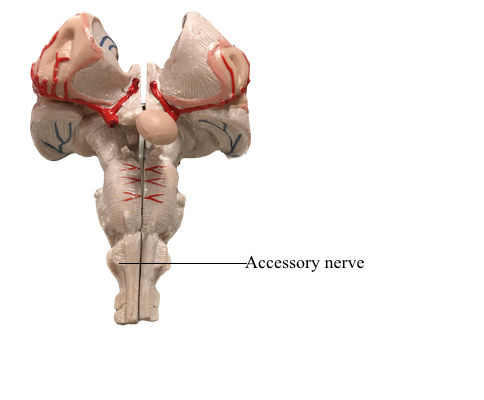Main Model

Cranial Nerves : XI Accessory nerve

Spinal Accessory Nerve (CN XI)
Functions: Somatic motor to the striated sternocleidomastoid and trapezius muscles.
Nuclei: The spinal accessory nerve arises from the nucleus of the spinal accessory nerve, a column of anterior horn motor neurons in the superior five or six cervical segments of the spinal cord.
The traditional “cranial root” of CN XI is actually a part of CN X. It may be united for a short distance with the spinal accessory nerve (CN XI). CN XI emerges as a series of rootlets from the first five or six cervical segments of the spinal cord. It joins the CN X temporarily as they pass through the jugular foramen, separating again as they exit. CN XI descends along the internal carotid artery, penetrates and innervates the sternocleidomastoid, and emerges from the muscle near the middle of its posterior border. Next, CN XI crosses the posterior cervical region and passes deep to the superior border of the trapezius to descend on its deep surface, providing multiple branches to the muscle. Branches of the cervical plexus conveying sensory fibers from spinal nerves C2-C4 join the spinal accessory nerve in the posterior cervical region, providing these muscles with pain and proprioceptive fibers.